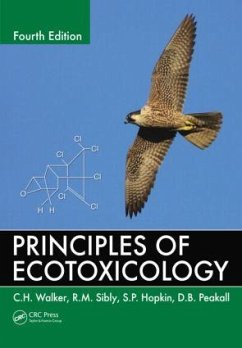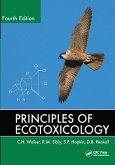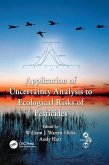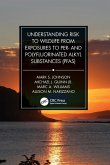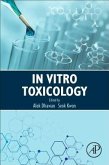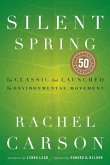Cutting across traditional subject boundaries, Principles of Ecotoxicology, Fourth Edition gives readers an integrated view of ecotoxicology, from molecules to ecosystems. This new edition of a bestselling textbook continues to emphasize principles rather than practice, providing the interdisciplinary perspective and grounding required for research.
Organized into three sections, the book first describes the molecular structures, properties, and environmental fate of pollutants. It then deals with the effects of pollutants on living organisms at the molecular, cellular, and individual levels. Moving into population biology and population genetics, the third part of the book addresses a question of great interest to ecologists: What effects do pollutants have at the levels of population, community, and the whole ecosystem?
The book also looks at how ecotoxicology is used in the biomonitoring of environmental pollution, the investigation of pollution problems, the conducting of field trials, the study of the development of resistance, and the growing area of environmental risk assessments. Throughout, examples and case studies illustrate the principles.
This updated fourth edition includes new material on nanoparticle pollution, bioaccumulation, biomarkers, and chemical warfare in nature, as well as a new chapter on the future directions of ecotoxicology. A concise textbook that will also appeal to practicing ecotoxicologists, it provides a solid basis for understanding what happens to chemicals in the real world, where they go, how they ultimately degrade, and how they affect the individuals and populations that encounter them.
What's New in This Edition
Revised and updated material throughoutA chapter on future directions of ecotoxicologyNew material on nanoparticle pollution and chemical warfare in natureExpanded coverage of bioaccumulation, biomarkers, and risk assessment for affected populationsMore case studies, many from the United StatesDiscussion of neurotoxic and behavioral effects of pollutantsRecent research on the decline of vultures and effects of neonicotinoids on bees
Organic Pollutants: An Ecotoxicological Perspective, Second Edition (CRC Press, 2008), a companion volume to this book, covers the mechanistic aspects of ecotoxicology in more depth.
Organized into three sections, the book first describes the molecular structures, properties, and environmental fate of pollutants. It then deals with the effects of pollutants on living organisms at the molecular, cellular, and individual levels. Moving into population biology and population genetics, the third part of the book addresses a question of great interest to ecologists: What effects do pollutants have at the levels of population, community, and the whole ecosystem?
The book also looks at how ecotoxicology is used in the biomonitoring of environmental pollution, the investigation of pollution problems, the conducting of field trials, the study of the development of resistance, and the growing area of environmental risk assessments. Throughout, examples and case studies illustrate the principles.
This updated fourth edition includes new material on nanoparticle pollution, bioaccumulation, biomarkers, and chemical warfare in nature, as well as a new chapter on the future directions of ecotoxicology. A concise textbook that will also appeal to practicing ecotoxicologists, it provides a solid basis for understanding what happens to chemicals in the real world, where they go, how they ultimately degrade, and how they affect the individuals and populations that encounter them.
What's New in This Edition
Revised and updated material throughoutA chapter on future directions of ecotoxicologyNew material on nanoparticle pollution and chemical warfare in natureExpanded coverage of bioaccumulation, biomarkers, and risk assessment for affected populationsMore case studies, many from the United StatesDiscussion of neurotoxic and behavioral effects of pollutantsRecent research on the decline of vultures and effects of neonicotinoids on bees
Organic Pollutants: An Ecotoxicological Perspective, Second Edition (CRC Press, 2008), a companion volume to this book, covers the mechanistic aspects of ecotoxicology in more depth.
An excellent fresh edition to one of the best ecotoxicology textbooks. Authored by some of the best scientists in the field, it deserves a place on the bookshelf of any serious environmental scientist.
-Michael C. Newman, College of William & Mary - Virginia Institute of Marine Science, USA
Praise for Previous Editions
Keeping the focus on principles over practice is what has made each incarnation of this book a bestseller. The third edition follows this central theme while bringing the text up to date and strengthening coverage in areas that have come to the forefront of the field. ...With updates to every chapter, the text provides essential information in an easy to use format.
-International Pest Control, Vol. 48 (2), March/April
The book is quite extensive in content and length....the authors continue to assist us in understanding the integration of this new knowledge by focusing on the 'principles' of the science.
-Lee R. Shugart in Ecotoxicology, Vol. 16 (483), 2007
...its aim is to provide a wide-ranging, concise and readable introduction to ecotoxicology that will encourages student to want to learn more about the field...continues to succeed.
-David Spurgeon in The British Toxicology Society Newsletter, Winter 2006
The coauthorship is advantageous in that it ensures that all topics are addressed by an expert, but the style is consistent and the content is integrated in a way that texts assembled by editors cannot achieve.
-Glenn Suter in SETAC Globe, July-August 2001
To say that ecotoxicology is a multidisciplinary subject is an understatement. This text attempts a comprehensive survey of all of these aspects. It succeeds admirably.
-Dr. J.W. Daniel in Chemistry & Industry, March 5, 2001
The authors used their outstanding interdisciplinary experience to describe the progression from chemical analysis of environmental pollutants to their effects at the levels of the individual, population, community and, ultimately, ecosystem. Using appropriate examples and relevant case studies, they have made ecotoxicology more accessible to any person who is concerned with environmental changes induced by pollution.
-Dr. Laurent Lagadic in Ecotoxicology, Vol. 10 (6), 2001
This is, by any standards, an outstanding book, written by a chemist, a mathematician and a zoologist, who have achieved their aim in producing a truly interdisciplinary approach across the full spectrum of topics, from molecules to ecosystems....This book will certainly succeed in serving its primary purpose-providing a textbook for students, which covers the principles of ecotoxicology with a broad approach, cutting across traditional subject boundaries.
-Michael Balls in ATLA, 1996
-Michael C. Newman, College of William & Mary - Virginia Institute of Marine Science, USA
Praise for Previous Editions
Keeping the focus on principles over practice is what has made each incarnation of this book a bestseller. The third edition follows this central theme while bringing the text up to date and strengthening coverage in areas that have come to the forefront of the field. ...With updates to every chapter, the text provides essential information in an easy to use format.
-International Pest Control, Vol. 48 (2), March/April
The book is quite extensive in content and length....the authors continue to assist us in understanding the integration of this new knowledge by focusing on the 'principles' of the science.
-Lee R. Shugart in Ecotoxicology, Vol. 16 (483), 2007
...its aim is to provide a wide-ranging, concise and readable introduction to ecotoxicology that will encourages student to want to learn more about the field...continues to succeed.
-David Spurgeon in The British Toxicology Society Newsletter, Winter 2006
The coauthorship is advantageous in that it ensures that all topics are addressed by an expert, but the style is consistent and the content is integrated in a way that texts assembled by editors cannot achieve.
-Glenn Suter in SETAC Globe, July-August 2001
To say that ecotoxicology is a multidisciplinary subject is an understatement. This text attempts a comprehensive survey of all of these aspects. It succeeds admirably.
-Dr. J.W. Daniel in Chemistry & Industry, March 5, 2001
The authors used their outstanding interdisciplinary experience to describe the progression from chemical analysis of environmental pollutants to their effects at the levels of the individual, population, community and, ultimately, ecosystem. Using appropriate examples and relevant case studies, they have made ecotoxicology more accessible to any person who is concerned with environmental changes induced by pollution.
-Dr. Laurent Lagadic in Ecotoxicology, Vol. 10 (6), 2001
This is, by any standards, an outstanding book, written by a chemist, a mathematician and a zoologist, who have achieved their aim in producing a truly interdisciplinary approach across the full spectrum of topics, from molecules to ecosystems....This book will certainly succeed in serving its primary purpose-providing a textbook for students, which covers the principles of ecotoxicology with a broad approach, cutting across traditional subject boundaries.
-Michael Balls in ATLA, 1996

